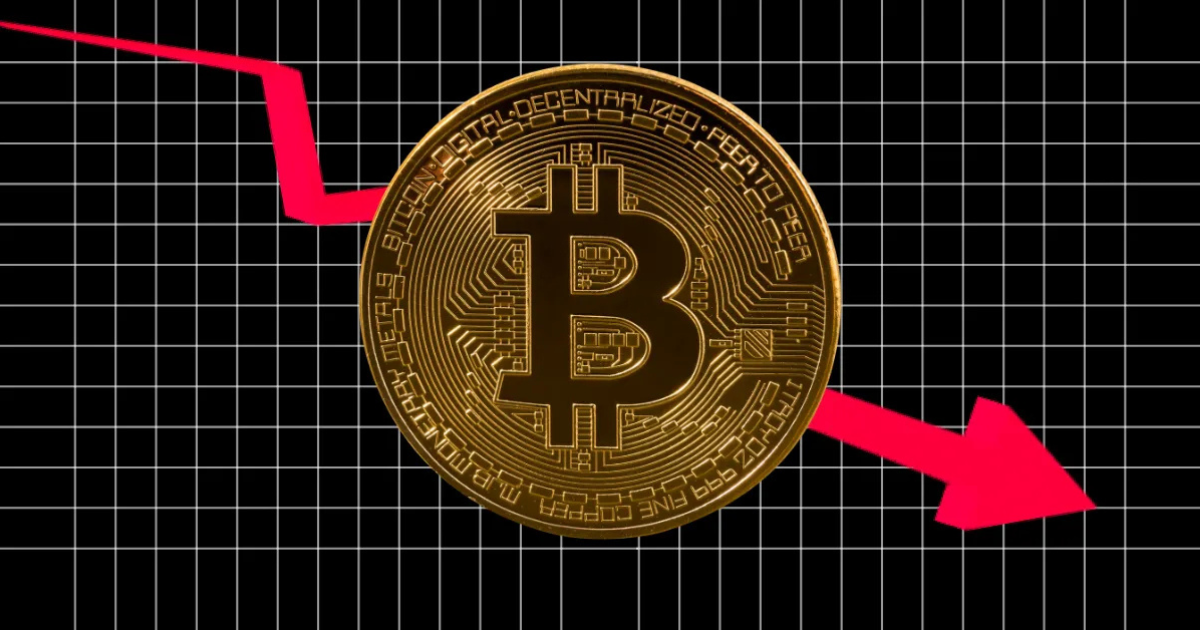Bitcoin worst Q1 performance since 2018 has the investors worried as they sign off the first quarter of 2025 with a 12.7% decline. It comes after BTC made a good start to the year as the asset climbed as high as $100,000 before the price fell into the $81,200-$83,500 range at month’s end.
Key Takeaways:
- Bitcoin declined 12.7% since the end of Q4 2025, to $94,700 as of press time, having peaked near $100,000 during the year and traded between the $81,200 to $83,500 areas.
- The new trade tariffs and growing uncertainty have forced the investors to turn to gold. For now, stable Coinbase Premium suggests that there may be the potential for a recovery, while technical indicators are indicating more downside.
Market Factors Behind Bitcoin Q1 Slump
 Bitcoin worst Q1 results are largely down to a coming addition of trade tariffs from the Trump administration. Yet the unstable market felt heightened after these new tariffs, which will impact about $1.5 trillion in U.S. imports on April 2.
Bitcoin worst Q1 results are largely down to a coming addition of trade tariffs from the Trump administration. Yet the unstable market felt heightened after these new tariffs, which will impact about $1.5 trillion in U.S. imports on April 2.
Therefore, investors are turning to old safe haven assets like gold that keeps crushing all-time highs. At the same time, Bitcoin has been struggling, as it has been broadly challenging the forces of changing economic policy.
The bearish engulfing candle that appeared on the weekly chart recently has fortified bearish sentiment, as given by technical indicators. Bitcoin and U.S. stocks are equally close to ‘death crosses’ that could precipitate further downside.
However, there is an imminent aggressive move, as the gap between the 50-day and 50-week EMA is narrowing. This compression majorly worries the market while causing uncertainty as to the short-term outlook of Bitcoin.
Despite the fact March ended with timid 2.7% losses, following which Bitcoin did post a relatively meager hole for the month, Q1’s full performance for the crypto remains its worst yet. Conversely, Bitcoin was up by nearly 68% during Q1 2024.
The Bitcoin MVRV ratio is giving a clearer picture of what was Bitcoin worst Q1 performance, trading towards its long-term average after a ‘death cross’ back in early March. Indeed, this is a very weak key profitability metric, signaling to investors weakening confidence.
CryptoQuant analysts observe that while Bitcoin is exiting the ‘overheated zone,’ there’s no clear bottom signal yet. This implies that further downside may be coming in the near term.
Some positive signs are still present even in Bitcoin worst Q1 performance. Recent price drops have also seen the Coinbase Premium resist, which tracks the difference between Coinbase and Binance price.
It is a clue of reduced panic selling and rising confidence on the part of U.S. investors. Such stability is the actual core of the sustainable Bitcoin bull market foundation.
Bitcoin has a history of bull market corrections that typically involve drawdowns of more than 60%. The recent decline, though, has been the low point of a correction that has been completely normal by historical standards.
This cycle is the least volatile among all, and one analyst said ” continues to be the least volatile of all,” indicating a maturing of the market. Even with Bitcoin worst Q1 on record, this perspective provides a more considered view.
Federal Reserve Policy and Economic Data Impact
 The timely economic data has not been kind to Bitcoin. From April 2 onwards, key U.S. reports like job openings, jobless claims, and nonfarm payrolls become available.
The timely economic data has not been kind to Bitcoin. From April 2 onwards, key U.S. reports like job openings, jobless claims, and nonfarm payrolls become available.
These statistics will reveal economic health and could affect the Fed policy. Bitcoin’s price movement and market sentiment can be further influenced by any surprises.
On April 4, Fed Chair Jerome Powell is scheduled to speak at the SABEW Annual Conference to talk about the economic outlook. Past remarks show he is cautious when considering cutting interest rates because of worries over tariff-driven inflation.
However, the CME Group’s FedWatch Tool is still expecting a possible rate cut to occur sometime in June. It will have a big say in how Bitcoin performs in its worst Q1 performance.
The market is cautious and has reached unusually high levels relative to the past with its Economic Policy Uncertainty (EPU) Index. This uncertainty also brings risk and opportunity to Bitcoin investors, as a serious policy shift could only make a deadening downtrend worse or start a recovery if conditions improve on the market.
In the most recent development, Bitcoin experienced the worst Q1 performance of its existence as the market lost confidence following the latest developments. Stabilization of the coin or continued decline will depend on key support around $80,000.
It is being scrutinized as an inflation hedge, as gold outperforms. The question for the next few months is whether Bitcoin can rekindle its safe haven status.
Bitcoin’s reaction to new tariffs is being watched by analysts, as such could alter its recovery. These policies will be the duration and severity.
The reality is that the past challenges have shown bitcoin to be resilient. For investors, this history provides them with some hope of a rebound.
Conclusion
It is resetting market expectations for future growth if the macro climate improves and Bitcoin worst Q1 ever has happened. While there are short-term pressures to come to bear, Bitcoin’s favorable supply dynamics after the halving provide for long-term upside for investors at a critical juncture.











